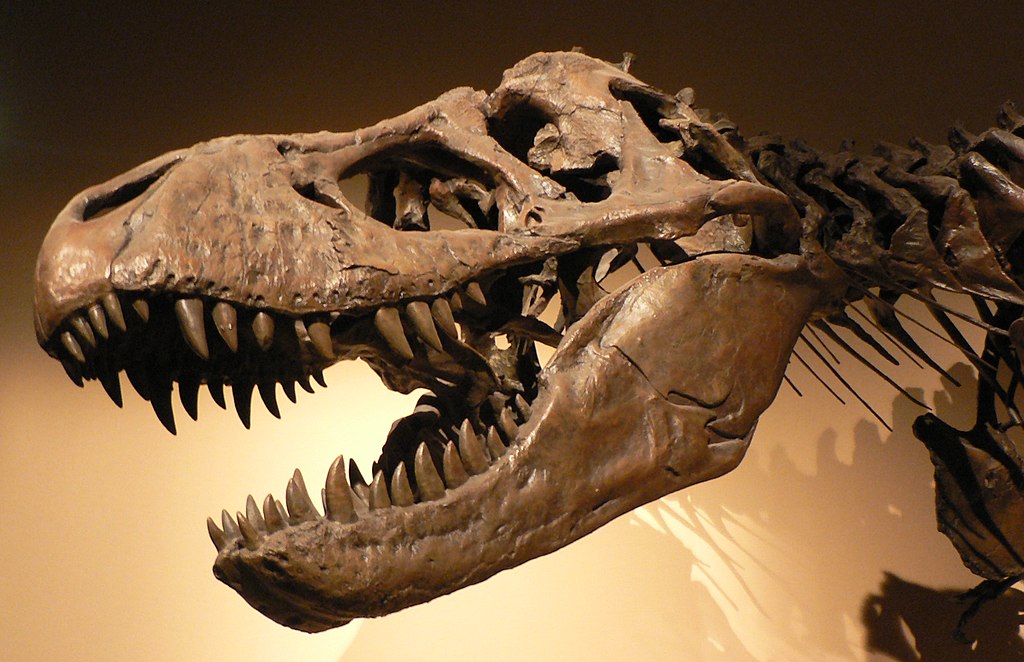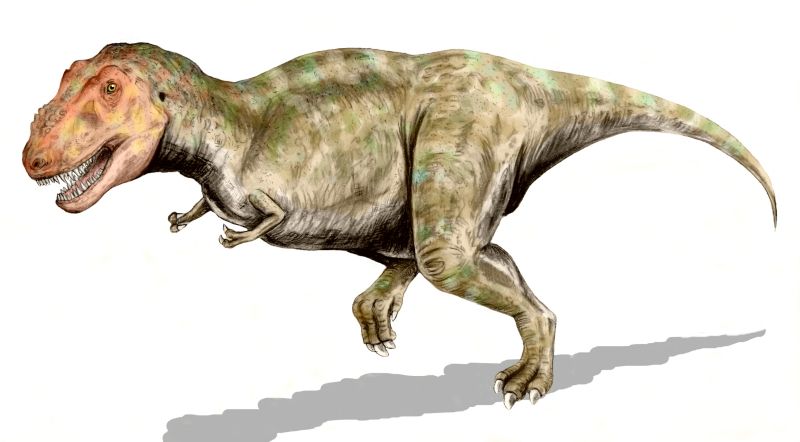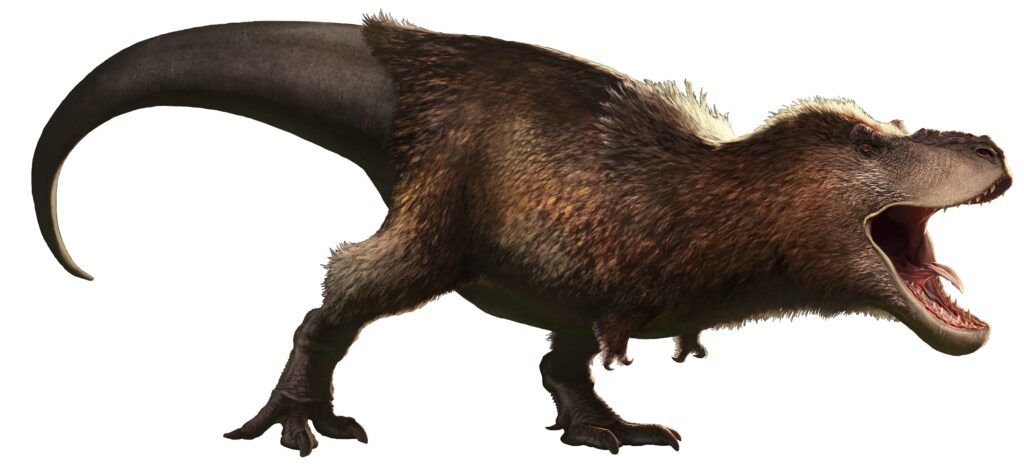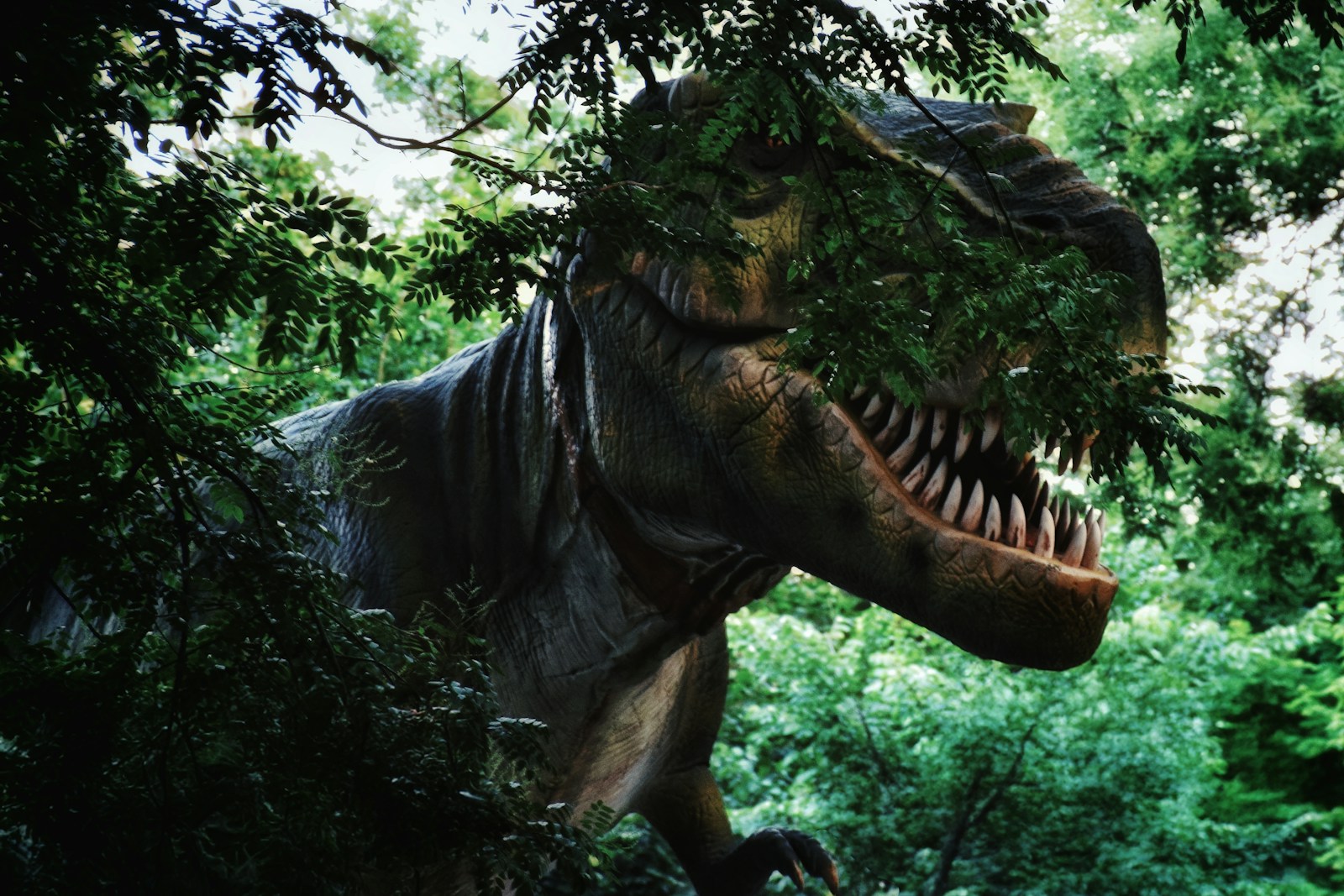The iconic scene from “Jurassic Park” where a Tyrannosaurus rex chases a Jeep at high speed has captivated audiences since 1993. With thunderous footsteps and terrifying roars, the prehistoric predator pursues the vehicle with seemingly relentless speed and agility. While this cinematic moment forever cemented T. rex in popular culture as the ultimate pursuit predator, scientific evidence suggests a very different reality. Let’s explore why, had they coexisted, T. rex probably wouldn’t have chased Jeeps after all.
The Physical Limitations of T. rex

Tyrannosaurus rex was undeniably impressive, standing approximately 12-13 feet tall at the hip and stretching up to 40 feet in length. However, this massive size came with significant physical constraints. Scientists estimate that an adult T. rex weighed between 5,000 and 8,000 kilograms (roughly 11,000-18,000 pounds), creating tremendous biomechanical challenges for rapid movement. The sheer mass would have placed enormous stress on its leg bones and joints during high-speed running. Computer models analyzing the structural integrity of T. rex leg bones suggest they would risk fracture if the animal ran at the speeds depicted in films. Such an injury would almost certainly prove fatal in the wild, making high-speed pursuits an evolutionary disadvantage rather than an advantage.
Speed Estimates Based on Scientific Evidence

Paleontologists have employed various methods to estimate T. rex’s maximum speed, and the results consistently fall well below what would be needed to chase a Jeep. Using biomechanical models that account for leg length, muscle mass estimates, and joint structure, scientists generally conclude that T. rex likely moved at top speeds between 10-15 miles per hour (16-24 km/h). Some more conservative estimates place it even lower, around 5-8 mph for sustained movement. By comparison, even a standard Jeep Wrangler can easily exceed 60 mph on flat terrain. The speed difference is so substantial that a Jeep would quickly outpace even the fastest estimates of T. rex running capability. Recent studies using computer simulations that analyze skeletal stress points have further reinforced that rapid acceleration and high-speed movement would have been biomechanically impossible for the massive predator.
Energy Expenditure and Hunting Strategy

Another crucial factor working against the movie-inspired chase scenario relates to energy conservation. Large predators typically avoid extended chases because they’re energetically costly. For a creature of T. rex’s size, the caloric expenditure required for high-speed pursuit would be enormous. Paleobiologists believe that T. rex more likely employed an ambush-hunting strategy, using short bursts of speed rather than prolonged chases. This hunting style would align with its physical attributes—powerful jaws, enhanced sense of smell, and possibly good depth perception for judging attack distance. Extended pursuits would have depleted the animal’s energy reserves while offering diminishing returns, especially when hunting the large herbivorous dinosaurs that likely constituted its preferred prey. Evolution tends to favor efficient hunting strategies, and for T. rex, that probably meant conserving energy with strategic, brief attacks rather than exhausting chases.
Anatomy and Center of Gravity

The T. rex’s physical structure presents another significant obstacle to high-speed pursuits. With its massive head and relatively short arms, the dinosaur had a distinct forward-heavy center of gravity. This anatomical reality would have made sharp turns and rapid direction changes—essential components of any chase—extremely difficult. When running at speed, the momentum of that massive head and upper body would create tremendous rotational forces during turns. Computer models suggest that attempting rapid direction changes might have caused the animal to stumble or even fall, potentially resulting in catastrophic injuries. Additionally, the position of the eyes on the sides of the skull, while providing good peripheral vision, would not have offered the ideal forward-facing focus needed for tracking fast-moving prey at high speeds. These anatomical constraints further support the theory that T. rex was not built for chasing relatively small, nimble targets, such as jeeps or humans.
The Problem with Popular Depictions

Movies like “Jurassic Park” have shaped public perception of dinosaurs in ways that often conflict with scientific understanding. The filmmakers deliberately chose to emphasize speed and agility to enhance dramatic tension, creating the memorable jeep chase that has influenced how generations view T. rex. Behind-the-scenes accounts reveal that director Steven Spielberg specifically requested the animal be portrayed faster than scientific evidence suggested because it created better cinema. This creative license, while understandable from a storytelling perspective, has contributed to persistent misconceptions about dinosaur capabilities. Similar artistic exaggerations appear in many dinosaur documentaries and films, where movement is often depicted as faster and more agile than paleontological evidence supports. The gap between scientific understanding and popular depiction continues to widen with each new film that prioritizes excitement over accuracy.
Fossil Evidence and Trackways

Physical evidence from fossil trackways provides further insights into how T. rex and related large theropods moved. Preserved footprint trails rarely show stride patterns indicative of high-speed running. Instead, they typically reveal more measured walking gaits with reasonable stride lengths consistent with moderate speeds. One particularly important set of trackways from a large theropod (though not specifically T. rex) shows a walking speed of approximately 5 mph, significantly slower than the sprinting speeds depicted in films. The relatively rare preservation of running trackways from large theropods could itself suggest that high-speed movement wasn’t their common mode of locomotion. Additionally, the depth and pressure patterns of preserved footprints allow scientists to calculate approximate weight distribution and movement mechanics, further supporting the theory that T. rex moved with power and purpose rather than exceptional speed.
Comparing T. rex to Modern Animals

Examining the speed capabilities of modern large animals provides useful context for understanding T. rex limitations. Today’s largest land predators, like African lions and tigers, can achieve short bursts of speed up to 35-40 mph, but these animals weigh merely a fraction of what T. rex did—typically under 500 pounds compared to T. rex’s many tons. The largest modern land animals, elephants, weigh roughly 5-7 tons (similar to T. rex) and have top speeds of about 25 mph in short bursts, but their specialized leg structure evolved specifically to support their mass during movement. Even more telling is that elephants rarely sustain these speeds for more than short distances due to energy constraints and the risk of injury. The combination of extreme size and predatory lifestyle presents unique biomechanical challenges not seen in any living animal today, making direct comparisons difficult but suggesting that T. rex’s speed would have been considerably limited by its mass.
The T. rex’s Hunting Advantages

Rather than speed, T. rex likely relied on other formidable adaptations that made it an apex predator. Its massive skull, measuring up to 5 feet in length, housed some of the strongest bite forces ever evolved in a land animal, estimated at between 8,000 to 12,000 pounds of force. This crushing power, combined with serrated teeth designed for slicing through flesh and bone, meant that a single bite could inflict devastating damage. T. rex also possessed remarkable sensory capabilities, particularly an advanced olfactory system that may have allowed it to detect prey from considerable distances. Some research suggests its vision was also quite refined, with eyes capable of depth perception similar to modern birds of prey. These adaptations paint a picture of a predator that used stealth, power, and precision rather than sustained high-speed pursuit to secure its meals. A successful T. rex was more likely to employ ambush tactics, using cover and terrain to approach prey before launching a sudden, devastating attack.
Inertia and Turning Radius Challenges

Physics presents another compelling argument against the T. rex-chasing-Jeep scenario. The principle of inertia dictates that objects in motion tend to stay in motion, and for massive objects like a T. rex, this creates significant challenges for changing direction. A running T. rex would have had an extremely wide turning radius due to its size and mass. Jeeps, by contrast, can execute tight turns even at moderate speeds. In a pursuit scenario, a Jeep could easily outmaneuver the dinosaur with simple evasive driving. Computer models analyzing T. rex biomechanics suggest that sharp turns at speed would have been nearly impossible without the animal losing balance. The massive tail, while helpful for balance in some movements, would have created additional rotational inertia during turns. Some paleontologists have calculated that a T. rex moving at its top estimated speed would have needed a turning radius wider than a football field to avoid dangerously destabilizing itself—a limitation that would make pursuing any agile target like a vehicle practically impossible.
Acceleration and Sustained Speed

Another critical factor in the hypothetical T. rex-versus-Jeep scenario involves acceleration capabilities. Even if we accept the most generous speed estimates for T. rex, its acceleration would have been relatively poor compared to motorized vehicles. The process of accelerating its enormous mass from a standstill to top speed would have required substantial time and energy. Muscle studies based on attachment points and bone structure suggest T. rex had powerful legs but not the type optimized for rapid acceleration. In contrast, even basic Jeep models can accelerate from 0 to 60 mph in seconds. This acceleration advantage means that even if a T. rex somehow managed to surprise a vehicle at close range, the Jeep would quickly create an insurmountable distance gap. Furthermore, while the dinosaur would quickly face fatigue after reaching top speed, vehicles can maintain their velocity indefinitely. This fundamental difference in sustained performance capabilities makes the extended chase scenes depicted in films particularly implausible from a scientific perspective.
Environmental Factors and Terrain

The environments T. rex inhabited would have further complicated high-speed pursuits. Late Cretaceous landscapes where T. rex lived included forests, river valleys, and varied terrains, not the consistently open spaces that would facilitate extended chases. Navigating through prehistoric forests or uneven ground at high speed would present serious hazards for such a large animal. Modern studies of large animals show they typically reduce speed significantly when moving through complex environments to avoid injury. Additionally, the soft soil conditions common in many Cretaceous environments would have reduced traction and potentially created unstable footing for rapid movement. A Jeep, with its designed suspension system and off-road capabilities, would have a significant advantage on almost any terrain. The combination of environmental obstacles and biomechanical limitations strongly suggests that T. rex would have been poorly equipped for the kind of sustained pursuit depicted in popular films.
Predator Psychology and Prey Selection

Beyond physical limitations, predator psychology offers another reason why T Rex wouldn’t likely chase Jeeps. Predators generally evolve to recognize and pursue appropriate prey animals—those that represent a favorable energy return on hunting investment. A loud, metal, obviously non-organic Jeep would bear no resemblance to any natural prey in the T. rex’s environment. While initial curiosity or territorial aggression might prompt investigation, sustained pursuit of something so unfamiliar would be evolutionarily unexpected. Studies of modern predators indicate they quickly abandon pursuits that seem unlikely to result in a meal, conserving energy for more promising hunting opportunities. Additionally, most predators are risk-averse when confronted with novel situations or potential threats, preferring to retreat unless defending territory or offspring. This conservative approach to unfamiliar entities would likely have characterized T. rex behavior as well, making extended pursuit of strange mechanical objects highly improbable from a behavioral perspective.
Scientific Consensus and Ongoing Research

The scientific understanding of T. rex locomotion continues to evolve as new research methods and fossil discoveries emerge. However, the overwhelming consensus among paleontologists today points toward a T. rex that was powerful but not particularly fast. Computer modeling has become increasingly sophisticated, allowing researchers to simulate muscle attachments, bone strength, and movement mechanics with greater precision than ever before. These advanced models consistently support the conclusion that T. rex’s speed was moderate at best. Recent studies using multibody dynamic analysis have further refined our understanding of how the massive predator moved, accounting for factors like inertial effects and joint stress that earlier research couldn’t fully address. While minor disagreements exist about exact speed capabilities, virtually no serious paleontologists support the idea that T. rex could sustain the kinds of speeds necessary to chase down a motor vehicle. This scientific consensus stands in stark contrast to the popular image perpetuated by entertainment media.
Conclusion

While the image of a T. rex pursuing a Jeep makes for thrilling cinema, the scientific evidence paints a very different picture of this magnificent prehistoric predator. Biomechanical limitations, energy constraints, and evolutionary adaptations all suggest T. rex was built for power rather than speed. Its hunting strategy likely relied on stealth, sensory advantages, and devastating bite force rather than sustained pursuit. The massive size that made T. rex one of history’s most formidable predators also ensured it would never have been capable of chasing down a motor vehicle. Perhaps understanding the real T. rex—a sophisticated predator perfectly adapted to its environment but bound by the laws of physics and biology—is even more fascinating than the Hollywood version. After all, this remarkable animal dominated its ecosystem for millions of years without ever needing to chase a Jeep.




